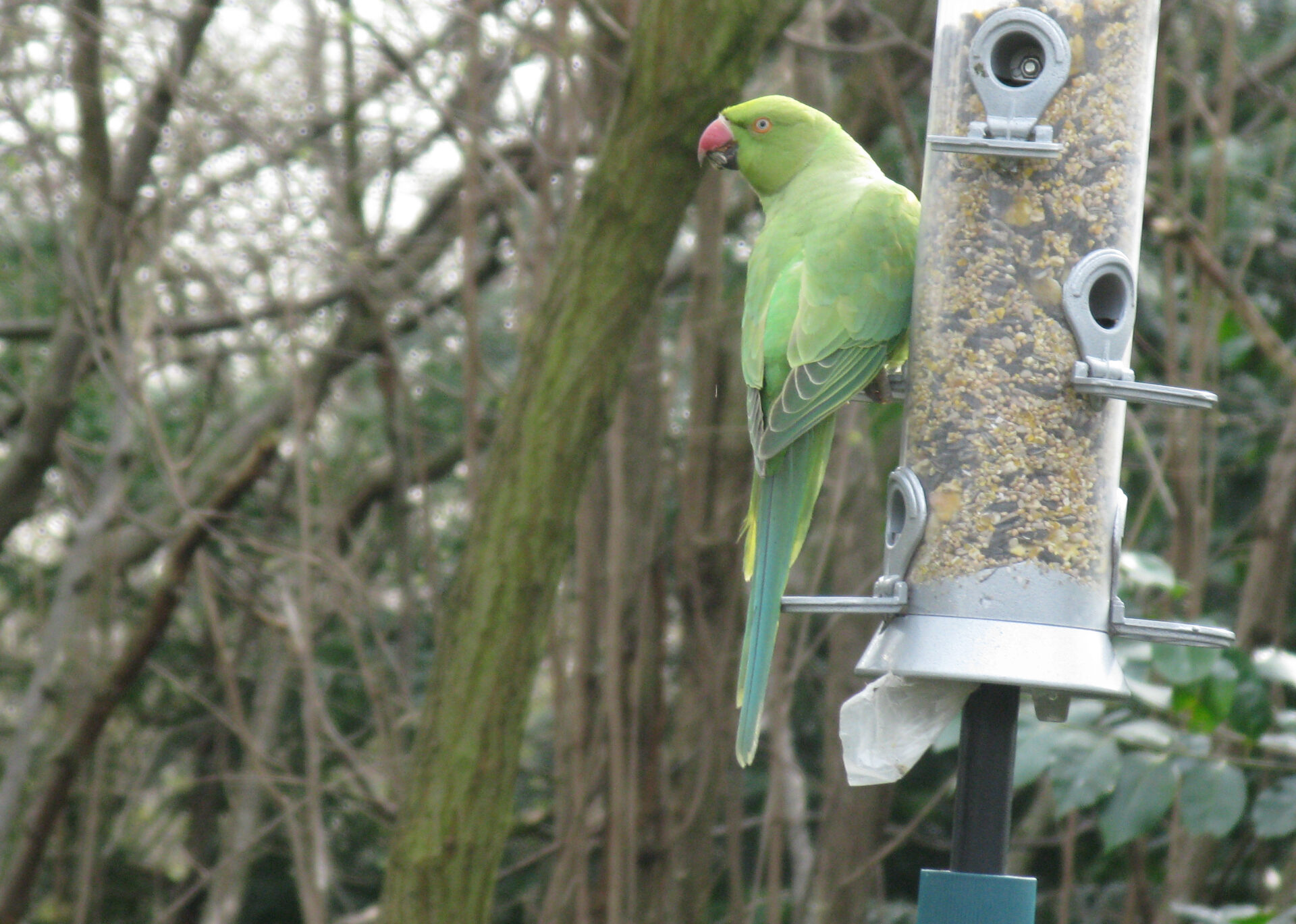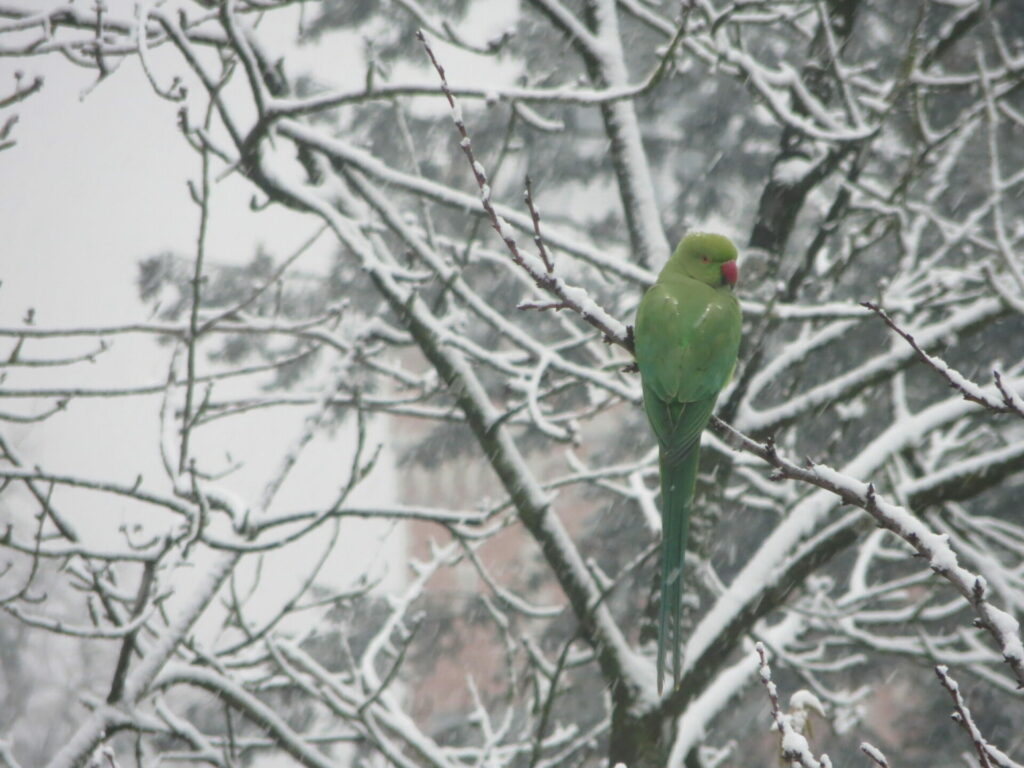Look to the skies in the Belgian capital and you’ve likely seen them: Brussels is home to between 8,000-10,000 parakeets. These colourful birds are certainly not native to our region, nor our continent, but in Brussels, they’ve found an unlikely home. Some locals treasure these birds and feed them, others groan at their noisy presence.
The origin of the birds is disputed, but a generally accepted theory is that the first population was established when a disenfranchised manager of the closed branch of the Meli Parc in Heysel decided to release them from the park’s aviary in around 1974. He could never have imagined the population nearly 50 years later.
Brussels' little green birds
“There are already three species of parakeet present in Brussels. The one we see most is the ring-necked parakeet, and it is usually the one said to have escaped the amusement park in Heysel. The other two species are the alexander parakeets, which are similar but a bit larger, and the monk parakeet, which builds big ball nests in some places,” Adrien Chevalier, head of the biodiversity mission at the Royal Belgian Legal for the Protection of Birds (LRBPO), told The Brussels Times.

In 2015, volunteers counted 8,000 ring-necked parakeets in Brussels alone. Credit: Belga / Nina Bouwens
Flying in flocks, up to 1,000 birds can occupy one tree at a time. The birds are sometimes described as “invasive”, but Chevalier assures that this isn’t the case.
“They cause very few problems. The thing is that they are just quite visible. They are noisy so they are easy to spot. And so a lot of people think that there are too many, that they’re not local, not natural, and that they’re probably causing problems, but all this is prejudice,” the biodiversity expert noted.
The LRBPO notes that, in their experience, the birds have very little impact on the biodiversity of Brussels. No effect has been observed on local birds. “Our local birds are not doing well, but they’re not doing any worse since the parakeet arrived,” Chevalier clarified.
Cause for concern?
Brussels is not the only European capital with an abundance of parakeets. London’s Hyde Park is famous for its sizeable population of tropical birds, which has even become a local tourist attraction.
Some say that the birds first escaped from the film set of the 1951 film The African Queen. Others have popularised the idea that rock legend Jimi Hendrix had released a pair on Carnaby Street, in the centre of London. In reality, they likely originated as escaped pets.
At one point, the British Department for Environment, Food, and Rural Affairs (DEFRA) put forward its recommendation to consider culling the ring-necked variant of the parakeet, but this ultimately never came to pass.
While the proliferation of the parrots in the UK is not without its problems, most experts refrain from calling them “invasive” or particularly dangerous to local birds. Parakeets were found to “dominate garden feeders” potentially making it harder for small birds to feed. Fortunately, parakeets are opportunistic feeders, and do not overeat any particular food source.
“They mostly eat plant matter so they stay mostly in the trees to feed, unlike pigeons. They eat young shoots, buds, flowers, or really any type of plant material,” Chevalier said. While the impact of the birds on nature is limited, there are still some detractors.
Other locals complain of noise pollution or the birds' predisposition to nest in holes in buildings. Some experts have also cited competition for nesting spots as a potential downside to the birds, however this generally does not seem to be an issue.

Credit: Tony Austin/Wikimedia Commons
“The ring-neck parakeets, they are all over our region. In the winter, and most of the year, they gather in places called dormitories. So in fact, they spend the night together en masse…. To give you an idea, and what I’m saying is approximate, 1,000 of them gather on a tree in the evening, but they only do so in a maximum of eight places in the whole region,” the avian expert said.
Chevalier says that these birds get a bad reputation, there are far more invasive tropical species present in the Brussels region, he argues, including the Canada goose and Egyptian goose, which “have more a negative impact on biodiversity than parakeets.”
“They look less exotic and they may seem less aggressive, or make less noise, but in fact their impact is much more problematic than for parakeets,” he concluded.
To catch a glimpse of the swarms of Brussels’ parakeet population, you can head to pretty much any of the city’s parks, but they are especially prevalent in the Étangs d’Ixelles area.

